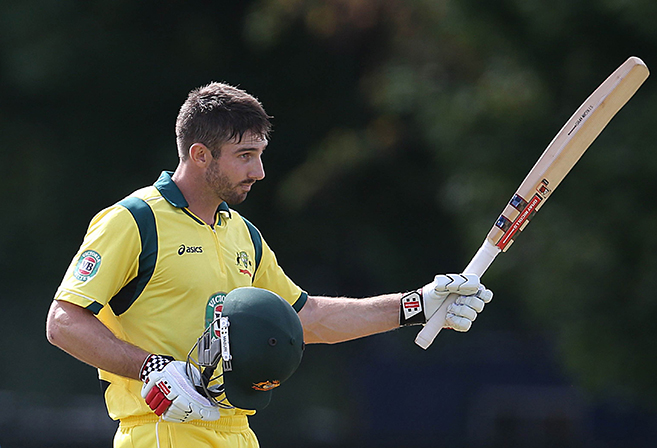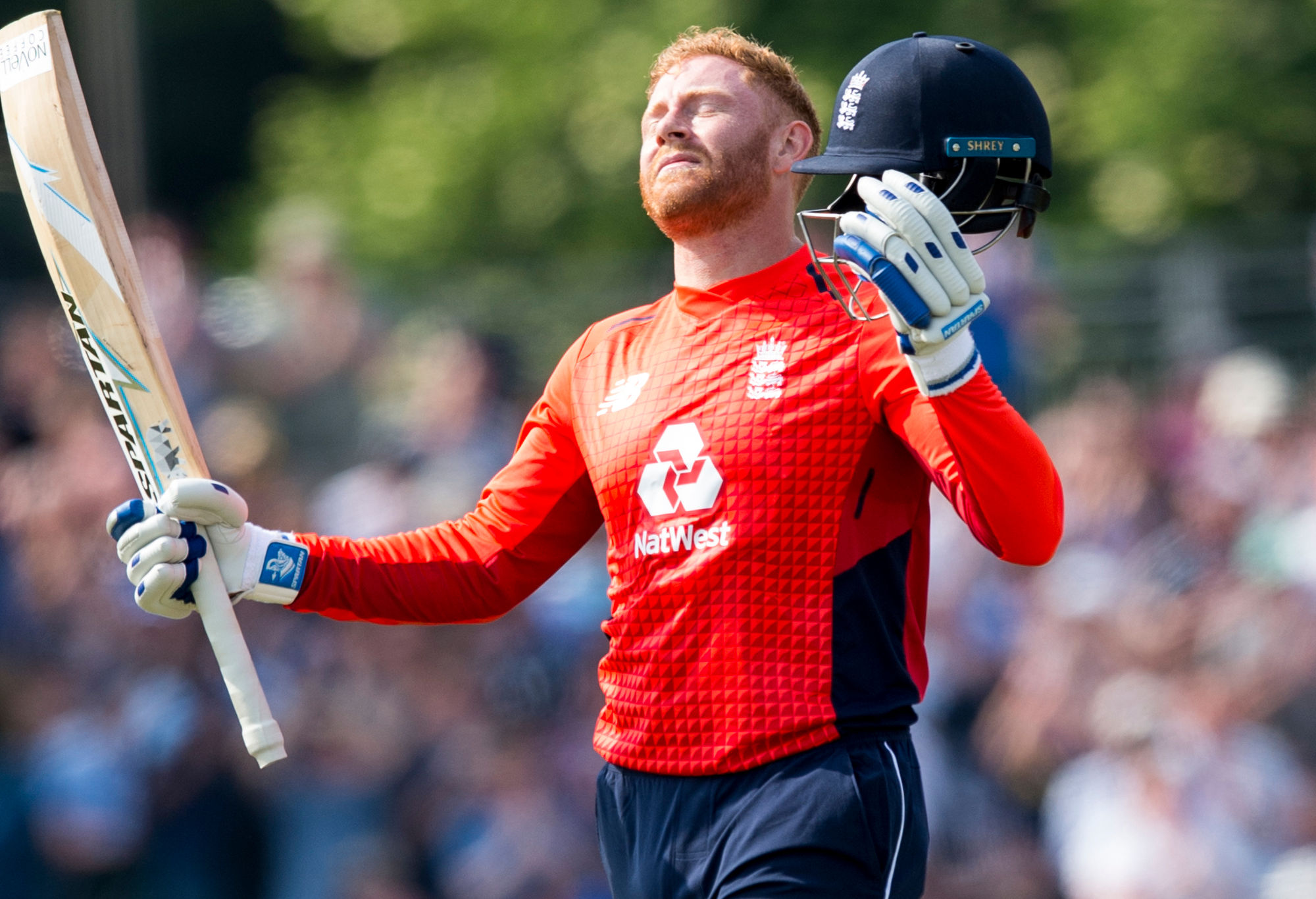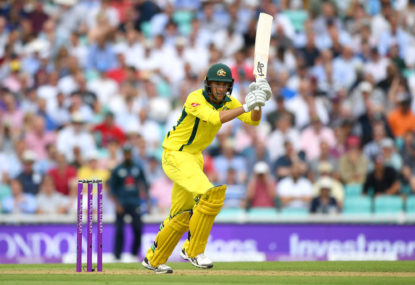Australia’s cobbled-together ODI line-up may already be 2-0 down in their five-match series in England but they have not been blown away in the manner I expected.
It always shaped as a near-impossible task for Australia to win this series away from home against the world’s number one ODI team while missing six members of their starting XI.
A near full-strength Australian team was beaten 4-1 at home by England just a few months ago which made a 5-0 result look likely in this return series.
A whitewash still appears highly possible given the gulf in talent between the teams but Australian fans can at least be heartened by the manner in which their side has continued to challenge England from positions of weakness. In both matches, Australia have climbed out of deep holes.
At The Oval last Wednesday their bowlers were tasked with defending a measly 214 against a powerful batting line-up which has little trouble chasing 350. In Cardiff on Saturday, Australia looked absolutely gone at 4-110 chasing 343.
In either scenario, it would have been easy for Australia to subside to a humiliating defeat. Instead, they maintained their composure, grinded away and managed to make England sweat. This heavy labour enabled Australia to get into positions from where victory was a possibility.
In the first match, Australia were able to reduce England to 6-163, still needing 52 to win.
In the second, they were in an even stronger position at 6-293, needing 51 from 29 balls with Shaun Marsh (131no) and Tim Paine (13no) at the crease.

(AFP/Ian Macnicol)
The wickets of both those batsmen in the space of three balls killed off the chase. But it was quite remarkable that Australia had even been within reach of victory at that point after being 4-110, needing 233 from 29 overs.
At the Oval, it was inexperienced quicks Billy Stanlake (2-44), Michael Neser (2-46) and Andrew Tye (2-42) who kept the tourists in the match. On the weekend it was veteran batsman Marsh (131) and young bowling all-rounder Ashton Agar (46).
Agar’s main task in this Australian side is with the ball. But so far, the West Australian left-arm spinner has had no impact as a bowler, taking 0-28 from five overs in the first match followed by 0-52 from nine overs in the second ODI.
Agar is not a match-winning spinner, he doesn’t boast befuddling variety. Rather his role is to try to keep things tight and create pressure during the middle overs of the innings, and at Cardiff he did that quite well.
Agar went for just 37 runs from his final eight overs, at 4.6 runs per over, after giving up 15 from his first over when he was curiously asked to bowl just six overs into the innings with the field up and Jonny Bairstow and Jason Roy on fire.

(Photo by MB Media/Getty Images)
Agar is a long way from proving that he is an international-standard 50-over spinner. But he needs to be given time to develop, having played just six ODIs spread across a period of three years.
If he is able to find his feet with the ball then he will greatly improve the balance of the Australian ODI line-up. A full strength Australian team could then boast a very potent 8/9/10 tail-end combination of Agar, Pat Cummins and Mitchell Starc.
It is the strength of England’s ODI tail which gives their top seven the confidence and liberty to take on the bowlers. Such freedom has been glaringly absent from Australia’s batting for at least two years now. That is in part due to the drop in batting form and regular absence of bowling all-rounder James Faulkner.
When Faulkner was making runs at eight, Australia were a much better balanced side and one which batted with a great deal more flair. He provided insurance down the order, freeing up batsmen to play their shots.
Looking ahead to next year’s World Cup, Australia will hope Agar can replicate this. He has batted very well in difficult circumstances in both matches of this series, making 40 at The Oval after arriving at 5-90, and then cracking 46 on Saturday when Australia were 5-164.
The one positive of so many key players being absent from the Australian line-up is that the team has nothing to lose and can experiment. Over the next six to seven months they should show faith in Agar.
If he begins to thrive, the side will be in a better position to compete at the World Cup. If he doesn’t they can fall back to the experienced Nathan Lyon to be their lead spinner at that tournament.
Of course, it was Agar’s batting partner in Marsh who was more deserving of praise.
The 34-year-old played a perfectly paced innings which likely would have guided Australia to victory had just one more member of the top six made a good score. Marsh has had a curious ODI career. He has never been a permanent member of the Australian side despite boasting a very good ODI record (2051 runs at 39) and a dominant record at domestic level (3673 runs at 46).
An accumulator more than a blaster, Marsh has been kept out of the team at various stages by fairly similar batsmen such as Steve Smith, Travis Head, George Bailey and Michael Clarke.
There’s little doubt that Marsh’s gentle pace of scoring has held him back.
[latest_videos_strip category=”cricket” name=”Cricket”]
In the modern era of ODIs, when totals of 330-plus are commonplace, batsmen need to be comfortable scoring at a-run-a-ball or better. With a career ODI strike rate of 79, Marsh struggles to achieve this. Prior to yesterday, he had scored at a strike rate of 100 or better in only two of his previous 25 ODI innings.
But his ton in Cardiff, scored at a strike rate of 113, was probably the most fluent Marsh has looked in ODIs. He now has a fantastic opportunity to finally nail down his spot.
With Australia missing their two most capped ODI batsmen – Smith and Warner – for the next nine months, Marsh’s experience will be very appealing to the national selectors.































































































